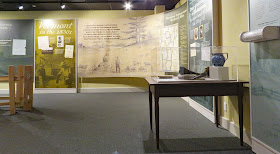Four generations of Robinsons lived on the farm that they named Rokeby. Thomas and Jemima Robinson, the first generation, were industrious Quakers and established saw, grist, and fulling mills with Lewis Creek providing power. They also raised Merino sheep on the farm but it was the second generation, Rowland and his wife, Rachel, who made history. As outspoken abolitionists they opened their farm to people fleeing slavery as they made their way to their final destinations. Vermont was a free state so the farm was not a place to hide. Instead, it was a place to rest, work to earn funds, and plan their next move. Some stayed for several months.
Elizabeth Donoway Robinson, the wife of Rowland Robinson was the last member of the family to live in the house. Her death in 1961 ended 168 years of Robinson occupation. Elizabeth willed the entire property and its contents to a non-profit to be managed as in museum.
The property includes a museum, the family house, eight outbuildings, and hiking trails. Museum displays focus on slavery and the role of the Robinson family. The house is opened for tours on Friday, Saturday, Sunday, and Monday. The house contains original furnishings from all family members.
The museum is accessible but getting to it is difficult. The parking lot is slanted and surfaced with loose gravel. The path to the entrance is loose gravel. The property and the outbuildings are not accessible due to uneven, hilly terrain and steps into the buildings. The trails are rough, grassy ground with steep hills. The museum has a ramp in the rear and a parking area that is fairly level. It was not open for tours when we visited.














Thank goodness for people like Rowland and Rachel, you know? God bless 'em.
ReplyDeleteYes, there are always good people to counteract the bad ones.
Delete